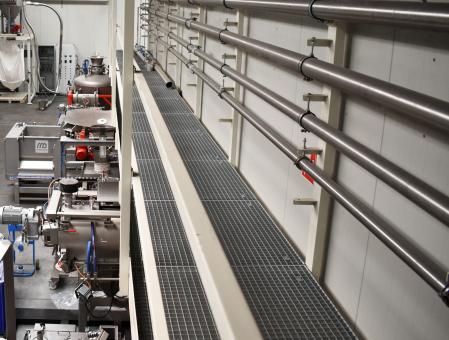This article highlights the following:
- The variants of input devices
- The properties to be assessed when choosing an input device
The experts at Dinnissen Process Technology are available to answer all your questions:
Get in touch with Juul Jenneskens 077 467 3555
The five variants of input devices
In any form of pneumatic transport, the product must be fed into the system in some way. All types of input devices are available, each of which has its own specific advantages and disadvantages. The following variants are available:
- Valves
- Screws
- Venturi systems
- Gate lock valves
- Pressure vessels
The four properties that influence the choice of an input device
Properties of the input device that must in any case be assessed when selecting are:
- Leaky air
- Pressure drop
- Maintenance
- Material properties
LEAKS
In vacuum systems, the product can be supplied from atmospheric pressure. Because there is a negative pressure in the pipe, the material is sucked into the pipe, as it were. No air will be returned from the line to the point where the product is introduced. Supplying products in systems with overpressure works a lot differently. If the material is at a stock point under atmospheric pressure, the material must be fed against the pressure. This can cause a loss of transport air. This is called leakage air. In the input device, a blow feed system must be designed to withstand the differential pressure. In some cases this air flow can obstruct the incoming product flow into the feeder. This disrupts the supply. If there is leakage air, this must be taken into account when calculating the required air.
PRESSURE DROP
The capacity of a pneumatic transport depends on the pressure loss over the entire system. If the input device is absorbing an unnecessarily large portion of the total pressure loss from the air source, less pressure will be available to transport the product through the lines. The pressure loss over the input device must therefore be as low as possible. After all, all the pressure loss must be compensated so that the capacity of the system remains the same. Alternatively, a higher pressure is used to compensate. This will increase the energy consumption of the system. This has a negative impact on both Capex and Opex in the form of higher energy costs.
MAINTENANCE
If leakage air is accepted in an input device it is important that it does not increase over time. This can lead to loss of speed of Air Transport, which can cause blockages. Blockages could occur with Dense Phase due to an increasing pressure loss. If moving parts are used with the input device, preventive maintenance and replacement of wearing parts must be considered. This is certainly the case with abrasive products.
MATERIAL PROPERTIES
Material properties help determine the selection of input devices. For both fragile and abrasive products, and for feeding systems with moving parts, care must be taken with both abrasive and friable materials. In addition, the particle size must be taken into account, especially the two extremes of large lumps and very fine particles.

Piping for pneumatic transport
If leakage air is accepted in an input device it is important that it does not increase over time

Name: Juul Jenneskens
Advisor
Please feel free to contact me if you have any questions about this subject. My team of colleagues and I are ready to answer!
Get in touch with Juul Jenneskens 077 467 3555 [email protected]
Do you prefer to request a consultation directly?
